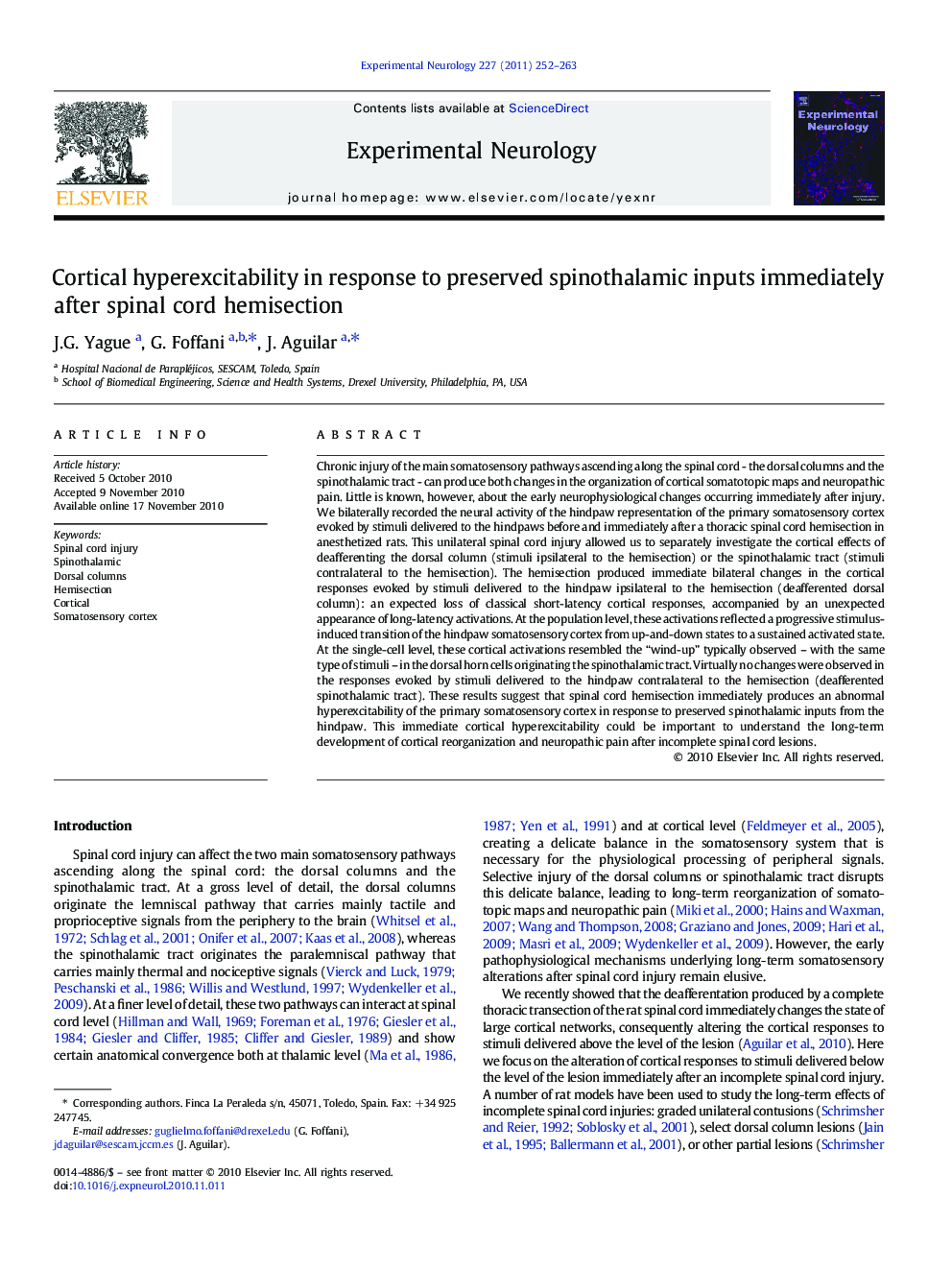| Article ID | Journal | Published Year | Pages | File Type |
|---|---|---|---|---|
| 3055932 | Experimental Neurology | 2011 | 12 Pages |
Chronic injury of the main somatosensory pathways ascending along the spinal cord - the dorsal columns and the spinothalamic tract - can produce both changes in the organization of cortical somatotopic maps and neuropathic pain. Little is known, however, about the early neurophysiological changes occurring immediately after injury. We bilaterally recorded the neural activity of the hindpaw representation of the primary somatosensory cortex evoked by stimuli delivered to the hindpaws before and immediately after a thoracic spinal cord hemisection in anesthetized rats. This unilateral spinal cord injury allowed us to separately investigate the cortical effects of deafferenting the dorsal column (stimuli ipsilateral to the hemisection) or the spinothalamic tract (stimuli contralateral to the hemisection). The hemisection produced immediate bilateral changes in the cortical responses evoked by stimuli delivered to the hindpaw ipsilateral to the hemisection (deafferented dorsal column): an expected loss of classical short-latency cortical responses, accompanied by an unexpected appearance of long-latency activations. At the population level, these activations reflected a progressive stimulus-induced transition of the hindpaw somatosensory cortex from up-and-down states to a sustained activated state. At the single-cell level, these cortical activations resembled the “wind-up” typically observed – with the same type of stimuli – in the dorsal horn cells originating the spinothalamic tract. Virtually no changes were observed in the responses evoked by stimuli delivered to the hindpaw contralateral to the hemisection (deafferented spinothalamic tract). These results suggest that spinal cord hemisection immediately produces an abnormal hyperexcitability of the primary somatosensory cortex in response to preserved spinothalamic inputs from the hindpaw. This immediate cortical hyperexcitability could be important to understand the long-term development of cortical reorganization and neuropathic pain after incomplete spinal cord lesions.
Research Highlights► Spinal cord hemisection (HX) produces immediate bilateral cortical changes. ► Population level: unmasked spinothalamic inputs abnormally activate cortical networks. ► Cell level: cortical activations resemble the wind-up observed in dorsal horn cells. ► HX produces immediate cortical hyperexcitability to preserved spinothalamic inputs. ► Relevance for long-term reorganization and pain after incomplete spinal cord injury.
